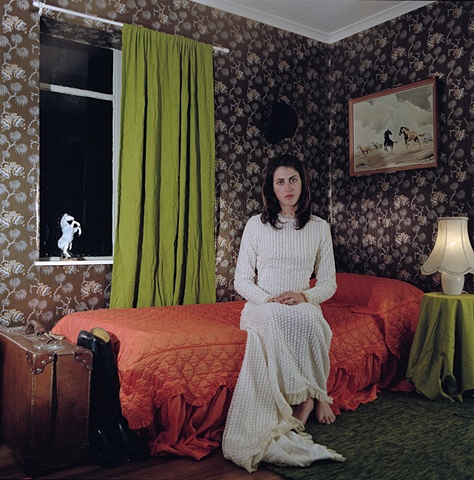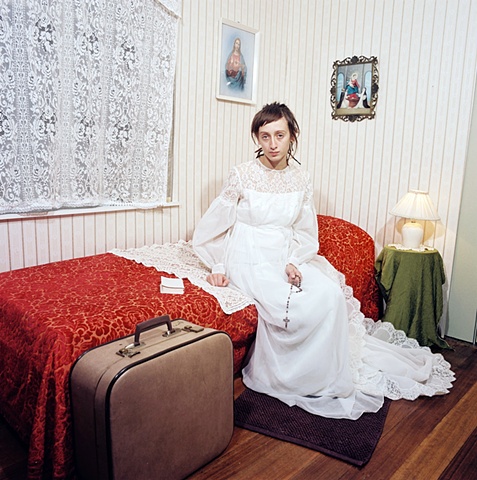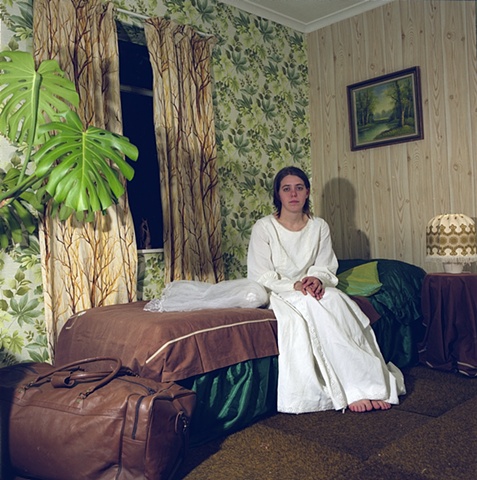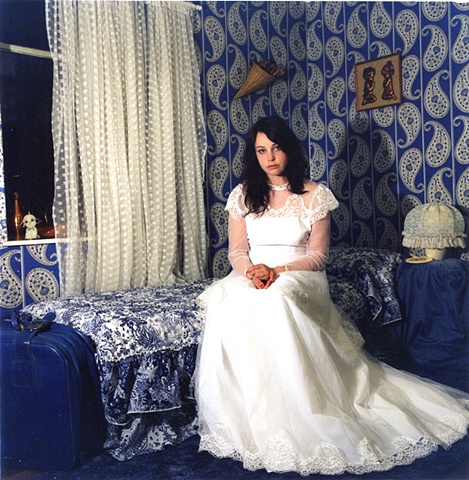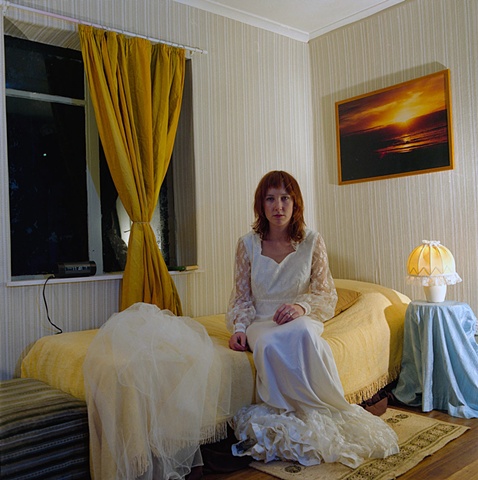great expectations II
Rooms that contain by Nicole Robson
A childhood bedroom is usually our first experience of personal space. We are placed in a room, which has been constructed by our parents: a room in which to play, imagine, sleep and dream. In the first half
of our childhood our containment within our rooms is imposed. Imposition fostering our imagination where shadows become dancing ballerinas and raincoats become boogiemen. As we move from
childhood to adolescence the strength of parental control has lessened, yet we then choose to contain ourselves in these private spaces. We make these spaces private by marking them as ours, with pictures, posters, ornaments and treasures on which to focus our fantasies. The adolescent bedroom is where the future adult gestates.
Gaston Bachelard in ‘The Poetics of Space’ discusses the idea that a space we live in is not merely
designed to contain objects or their architectural use of design:
“…It is not a question of describing houses, or enumerating their picturesque features and analysing for
which reasons they are comfortable. Rather, space is the abode of human consciousness, and the
problem is to study how it accommodates consciousness—the half-dreaming consciousness or ‘reverie’.” Bachelard, Gaston, The Poetics of Space, (1958) Beacon Press, USA.
Adolescent’s half-dreaming consciousness manifests within the four walls of their bedroom. It is the place where they construct a world of possibilities. What is placed within these rooms becomes a shrine
to their aspirations.
